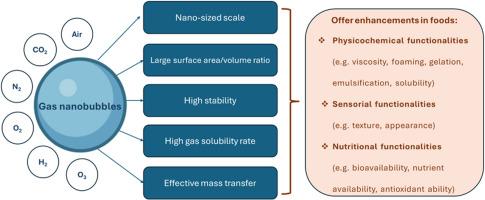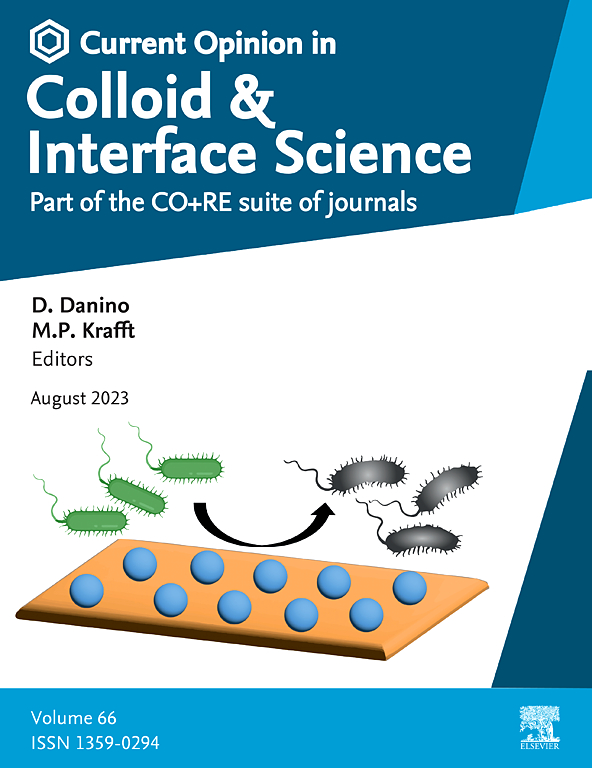纳米气泡创建增强食品相关产品的功能
IF 7
2区 化学
Q1 CHEMISTRY, PHYSICAL
Current Opinion in Colloid & Interface Science
Pub Date : 2025-08-20
DOI:10.1016/j.cocis.2025.101955
引用次数: 0
摘要
随着纳米技术的发展,食品级纳米气泡在食品领域的作用和应用迅速发展。NBs被称为直径小于1 μm的超细气泡。NBs具有体积极小、稳定性好、内压高、面容比大等特点,可以极大地促进各种食品加工和相关产品的生产,提高食品的安全性和功能性。气体压力、温度、表面活性剂、电解质、气体类型和浓度等因素都会影响液体系统中NBs的形成和稳定性。这篇综述文章讨论了大体积气体NBs的一般概念,它们的胶体稳定性和其他与可行的食品应用相关的特殊特性。特别关注使用NBs增强食品相关产品功能的潜在潜力和潜在机制。还简要讨论了在粮食生产中纳入国家统计局的挑战和未来前景。本文章由计算机程序翻译,如有差异,请以英文原文为准。

Nanobubbles to create enhanced functionalities of food-related products
Together with the development of nanotechnology, roles and applications of food-grade nanobubbles (NBs) have rapidly evolved in the food field. NBs are known as ultrafine gas bubbles with a diameter less than 1 μm. Owing to unique features, such as an extremely tiny in size, outstanding stability, high internal pressure and an extensive surface-to-volume ratio, NBs can significantly facilitate various food processes and related products, as well as enhance food safety and functionalities. There are factors such as gas pressure, temperature, surfactants, electrolytes, gas type, and concentration that impact the formation and stability of NBs in the liquid system. This review article discusses the general concept of bulk-gas NBs, their colloidal stability and other exceptional characteristics relevant to feasible food applications. A special focus is on promising potentials and underlying mechanisms of using NBs to enhance functionalities of food related products. Challenges and future perspectives of comprising NBs in food production are also briefly discussed.
求助全文
通过发布文献求助,成功后即可免费获取论文全文。
去求助
来源期刊
CiteScore
16.50
自引率
1.10%
发文量
74
审稿时长
11.3 weeks
期刊介绍:
Current Opinion in Colloid and Interface Science (COCIS) is an international journal that focuses on the molecular and nanoscopic aspects of colloidal systems and interfaces in various scientific and technological fields. These include materials science, biologically-relevant systems, energy and environmental technologies, and industrial applications.
Unlike primary journals, COCIS primarily serves as a guide for researchers, helping them navigate through the vast landscape of recently published literature. It critically analyzes the state of the art, identifies bottlenecks and unsolved issues, and proposes future developments.
Moreover, COCIS emphasizes certain areas and papers that are considered particularly interesting and significant by the Editors and Section Editors. Its goal is to provide valuable insights and updates to the research community in these specialized areas.

 求助内容:
求助内容: 应助结果提醒方式:
应助结果提醒方式:


